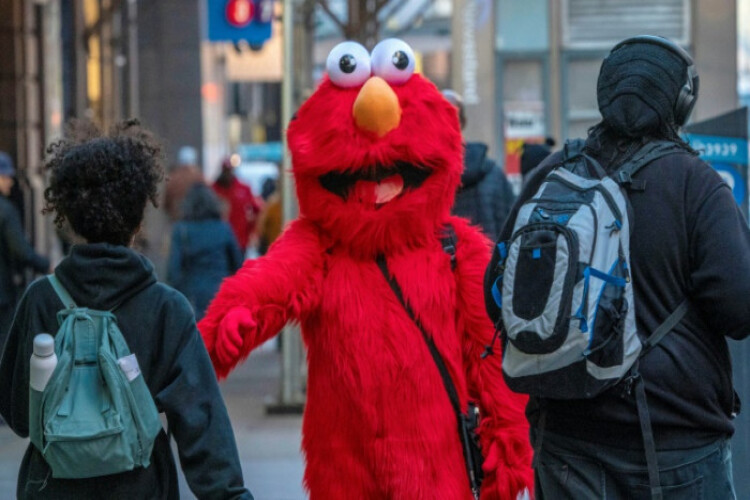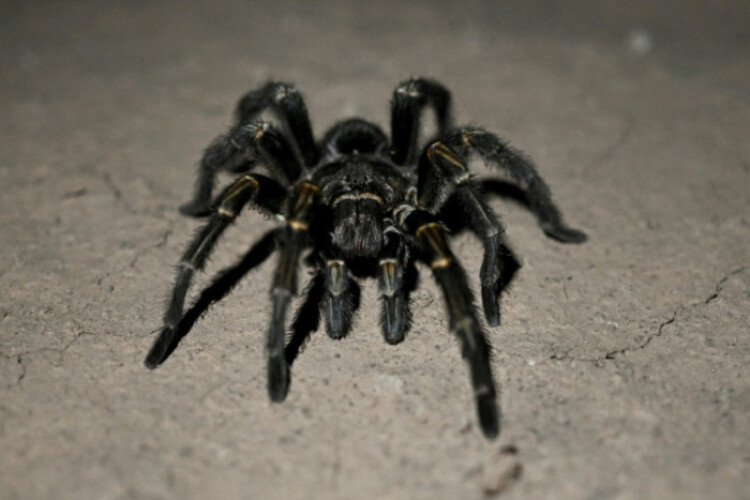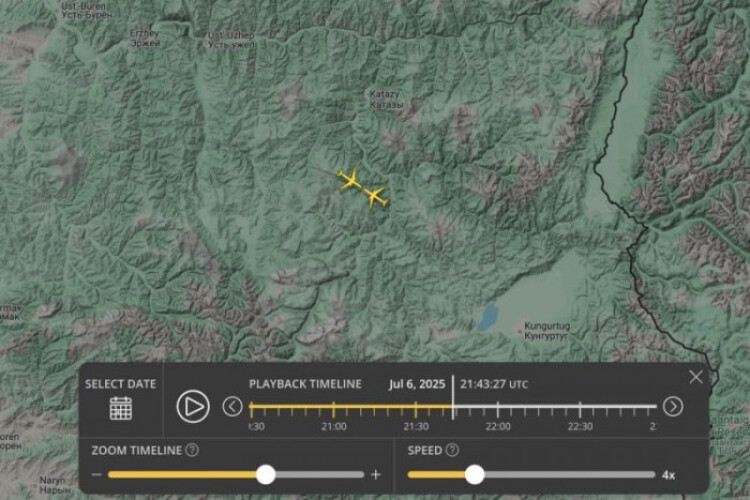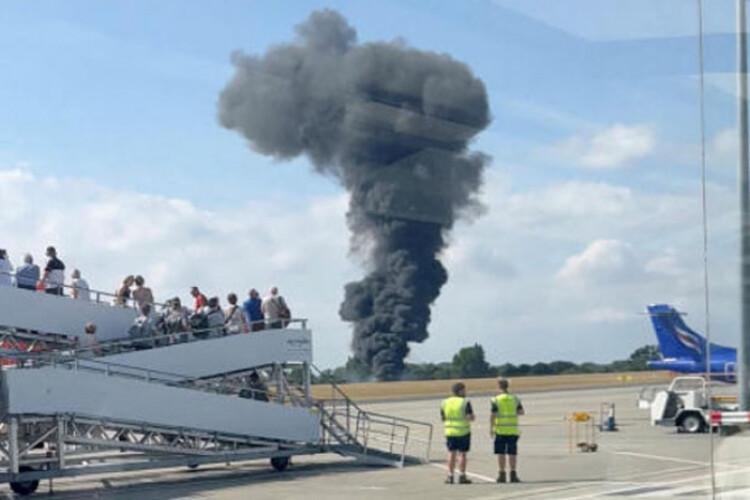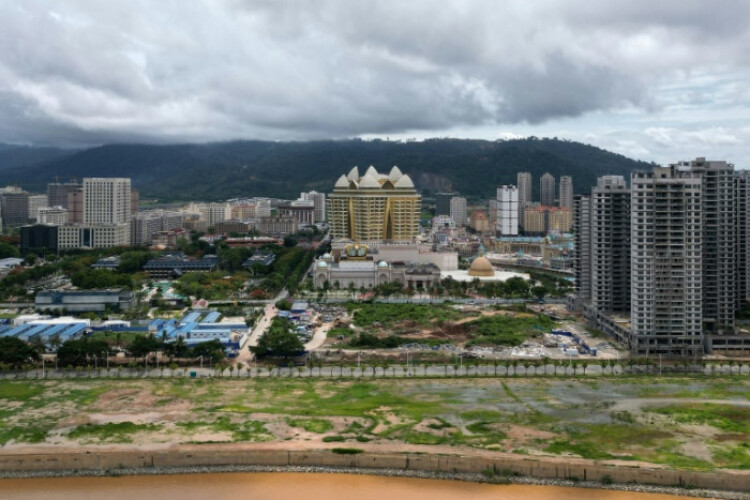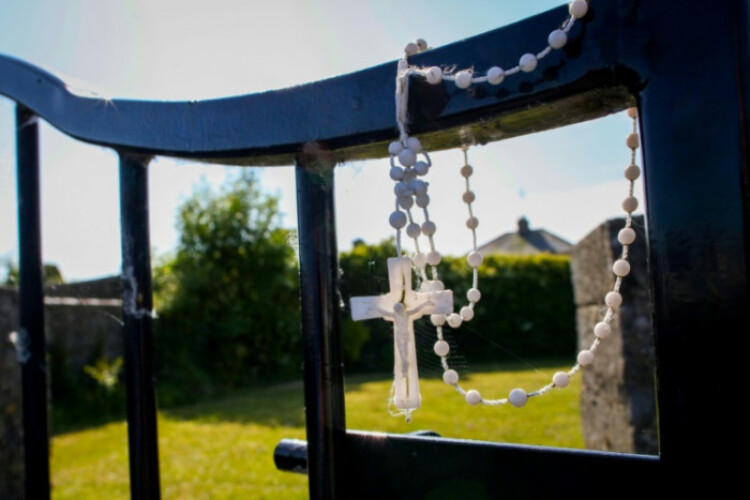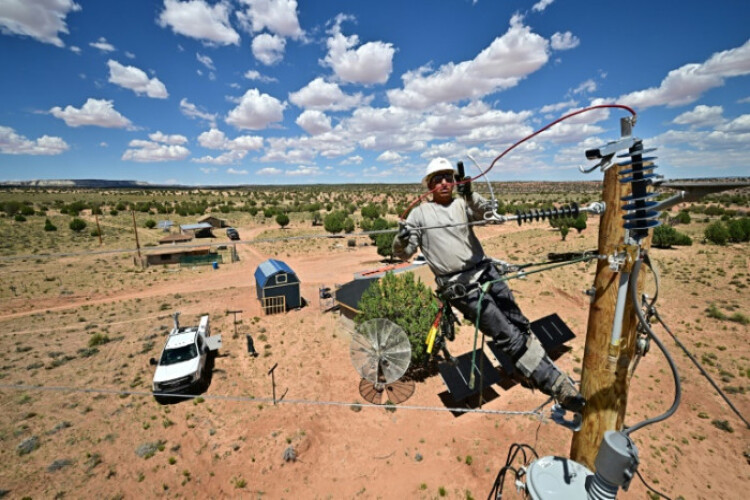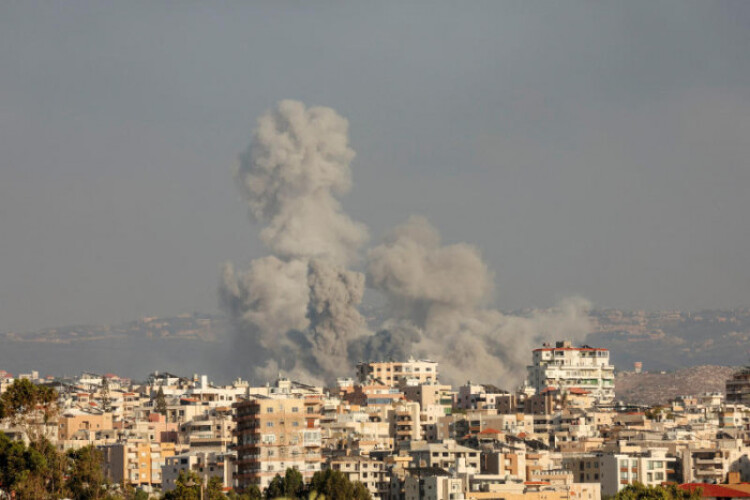
JERUSALEM — Dozens of Israeli fighter jets bombed Hezbollah targets in southern and eastern Lebanon on Monday, killing hundreds and wounding more than a thousand others, Lebanese officials said, in the deadliest attacks in the country since 2006, when Israel and Hezbollah fought their last all-out war.
As Israeli warplanes raced through Lebanon’s skies, Hezbollah, the powerful Lebanese militia backed by Iran, launched its own barrage at Israel. Air-raid sirens there rang out repeatedly as roughly 250 rockets and other munitions crossed the border, according to the Israeli military. Most of the projectiles were intercepted by Israel's antimissile defence system, and there were no immediate reports of deaths or serious casualties.
The widespread airstrikes in Lebanon — and warnings by Israel to Lebanese to flee areas where it said Hezbollah was stashing weapons — set off fear and confusion among civilians. Many pulled their children from school and left home. Cars clogged main roads to Beirut, the capital, as people fled cities, towns and villages in southern Lebanon, where many of the heaviest strikes landed, witnesses said.
Lebanon's health ministry said the bombardment had killed at least 492 people, including at least 24 children, and injured more than 1,600. The ministry, which counts casualties reported to hospitals, did not say how many of the dead were Hezbollah fighters.
The single-day death toll was nearly half the total toll in Lebanon in the 2006 Israel-Hezbollah war, which lasted 34 days.
Israeli leaders said they were intensifying their attacks on Hezbollah to stop it from firing into northern Israel, which the group began doing Oct 8, a day after its Gaza Strip ally, Hamas, led the deadly cross-border raid on southern Israel.
Prime Minister Benjamin Netanyahu told Israelis to expect "complicated days" ahead and said Israel was determined to "change the balance of security" in the north. "That is exactly what we're doing,” Netanyahu said.]
Message for the people of Lebanon: pic.twitter.com/gNVNLUlvjm
For nearly a year, the Israeli military has concentrated its firepower on Gaza, seeking to dismantle Hamas and free the remaining hostages seized Oct 7. But in recent weeks, military leaders have said they were shifting more resources north toward the border with Lebanon. They said they were opening up a new, more intense phase of the fight and were intent on pushing Hezbollah forces deeper into Lebanon.
In the past week alone, clandestine operations widely attributed to Israel blew up Hezbollah’s pagers and walkie-talkies across Lebanon, killing 37 people and wounding thousands. Then the Israeli air force killed Ibrahim Aqeel, a senior Hezbollah leader, alongside several other commanders of the group’s elite Radwan unit, in a bombing on a residential building in Beirut.
Israeli officials had hoped that by scaling up their attacks over the past week they would unnerve Hezbollah and persuade it to pull farther from the border, allowing roughly 60,000 Israelis displaced by Hezbollah fire to return home. More than 100,000 Lebanese have also been forced from their homes.
But for now, the opposite has happened: Hezbollah leaders have said they will continue their attacks until Israel ends its military campaign against Hamas in Gaza. Hezbollah’s leader, Hassan Nasrallah, has even dared Israel to invade southern Lebanon, a move that could just as plausibly lead to a protracted stalemate as an Israeli victory.
A retired Israeli military intelligence officer, Danny Citrinowicz, said Monday that Hezbollah had sustained some “difficult blows” but that it still retained considerable power to strike Israel should it decide to move closer to full-blown war.
And it was far from clear whether the latest escalation would serve Israel's goal of forcing Hezbollah to stop firing at the north, he said.
"Despite the dramatic achievements, I'm not sure that Nasrallah can be convinced to stand down by military force," said Citrinowicz, a fellow at the Institute for National Security Studies in Tel Aviv, Israel.
The Israeli military said Monday that it had dropped more than 1,400 bombs and other munitions on more than 1,300 Hezbollah sites in Lebanon, a major show of force targeting buildings in which it said the group had hidden rockets, missiles, launchers, drones and other military infrastructure.
The strikes were concentrated in southern Lebanon, according to a New York Times analysis of local news reports, although many others hit the northeastern Bekaa Valley and as far north as Hermel, a town near the Syrian border.
The country’s health minister, Dr Firass Abiad, said that thousands of Lebanese families had been displaced by the Israeli offensive and that some of the strikes had hit medical centres, ambulances and fire trucks, as well as people who were attempting to drive to safety.
Monday evening, the Israeli military carried out an airstrike in Beirut that targeted Ali Karaki, a member of Hezbollah's top leadership, according to two current Israeli officials and one former Israeli official with knowledge of the operation. Hezbollah said in a statement that Karaki had survived the attack.
On Monday, Netanyahu issued a statement in English to the Lebanese people, saying that "Israel's war is not with you; it's with Hezbollah." He warned Lebanese citizens "to get out of harm's way" until Israel's operation was finished.
The Israeli military's Arabic-language spokesperson, Avichay Adraee, told residents of the Bekaa Valley that if they were close to or inside Hezbollah sites, they had until about 5pm to move :no less than 1,000 metres" outside their village or head to the nearest "central school." They should not return until further notice, he said on social media.
People in Lebanon reported receiving text messages and automated calls warning them to move away from Hezbollah’s weapons caches. The warnings echoed the ones the Israeli military has repeatedly issued in Gaza, which have prompted Palestinians there to relocate again and again in a desperate — and often fruitless — search for safety.
Smoke rises from Beirut's southern suburbs, Lebanon, on Monday in this still picture taken from a video. (Photo: Reuters)
Mohanad Hage Ali, a Beirut-based fellow at the Carnegie Middle East Centre, said that Israel was adopting a "Gaza-like approach in southern Lebanon," and that evacuation warnings were "absurd" because Lebanese civilians would have no idea where Hezbollah weapons were stashed. Lebanon's information minister, Ziad Makary, called the warnings a form of “psychological warfare."
Maj Gen Patrick S Ryder, a Pentagon spokesperson, said Monday that the United States was sending a "a small number of additional US military personnel" to the Middle East in light of what he called "increased tensions" in the region. The troops will number in the dozens, one official said, and will help protect the thousands of Americans stationed there.
"We continue to consult closely with Israel and others in the region to prevent this from becoming a wider regional war," Ryder told reporters. The US wants "to see temperatures be reduced and escalation be reduced," he said.
The bombardment in Lebanon came a day before world leaders were to gather in New York for the annual meeting of the United Nations (UN) General Assembly, where the conflict along the Lebanese-Israeli border is expected to be a major topic of debate.
Netanyahu, after delaying his travel plans, was expected to deliver a speech to the assembly Friday. Lebanon’s caretaker prime minister, Najib Mikati, said Saturday that he had cancelled his trip to the UN, citing concerns about an all-out war breaking out.
Stéphane Dujarric, a spokesperson for UN Secretary-General António Guterres called Monday for an immediate cease-fire between Hezbollah and Israel, saying, "Space must be given for diplomatic efforts to succeed."
But in eastern Lebanon, the Israeli strikes were "nonstop," said Bachir Khodor, the governor of the Baalbek-Hermel region. He said at least 18 towns and cities had been hit, and shared footage of what appeared to be apartment buildings on fire. Officials were turning schools into shelters for people displaced by Israeli airstrikes.
"We have to be ready for the worst scenario," Khodor said.
⚡️⭕️ WARNING ⚠️ Israel is in the process of doing a deception campaign in order to justify bombing the homes of southern #Lebanon :They're dropping illumination flares and bombing homes with small ammunition multiple times to make it look like weapon depots exploding.This… pic.twitter.com/mzU4zjpXtL
Outside one school in east Beirut on Monday morning, dozens of children in light blue polo shirts waited to be picked up, while others rushed out of the building, gripping their parents' hands.
"I am scared, I'm scared," said Joaelle Naser, 44, who had come to pick up her three daughters, 6, 8 and 16. "I'm not prepared for if something happens."
The Israeli military, in an effort to explain its deadly attacks in Lebanon, said on social media that "over a million Israeli civilians are running to bomb shelters in Haifa as Hezbollah indiscriminately fires rockets."
This article originally appeared in The New York Times.
As Israeli warplanes raced through Lebanon’s skies, Hezbollah, the powerful Lebanese militia backed by Iran, launched its own barrage at Israel. Air-raid sirens there rang out repeatedly as roughly 250 rockets and other munitions crossed the border, according to the Israeli military. Most of the projectiles were intercepted by Israel's antimissile defence system, and there were no immediate reports of deaths or serious casualties.
The widespread airstrikes in Lebanon — and warnings by Israel to Lebanese to flee areas where it said Hezbollah was stashing weapons — set off fear and confusion among civilians. Many pulled their children from school and left home. Cars clogged main roads to Beirut, the capital, as people fled cities, towns and villages in southern Lebanon, where many of the heaviest strikes landed, witnesses said.
Lebanon's health ministry said the bombardment had killed at least 492 people, including at least 24 children, and injured more than 1,600. The ministry, which counts casualties reported to hospitals, did not say how many of the dead were Hezbollah fighters.
The single-day death toll was nearly half the total toll in Lebanon in the 2006 Israel-Hezbollah war, which lasted 34 days.
Israeli leaders said they were intensifying their attacks on Hezbollah to stop it from firing into northern Israel, which the group began doing Oct 8, a day after its Gaza Strip ally, Hamas, led the deadly cross-border raid on southern Israel.
Prime Minister Benjamin Netanyahu told Israelis to expect "complicated days" ahead and said Israel was determined to "change the balance of security" in the north. "That is exactly what we're doing,” Netanyahu said.]
Message for the people of Lebanon: pic.twitter.com/gNVNLUlvjm
For nearly a year, the Israeli military has concentrated its firepower on Gaza, seeking to dismantle Hamas and free the remaining hostages seized Oct 7. But in recent weeks, military leaders have said they were shifting more resources north toward the border with Lebanon. They said they were opening up a new, more intense phase of the fight and were intent on pushing Hezbollah forces deeper into Lebanon.
In the past week alone, clandestine operations widely attributed to Israel blew up Hezbollah’s pagers and walkie-talkies across Lebanon, killing 37 people and wounding thousands. Then the Israeli air force killed Ibrahim Aqeel, a senior Hezbollah leader, alongside several other commanders of the group’s elite Radwan unit, in a bombing on a residential building in Beirut.
Israeli officials had hoped that by scaling up their attacks over the past week they would unnerve Hezbollah and persuade it to pull farther from the border, allowing roughly 60,000 Israelis displaced by Hezbollah fire to return home. More than 100,000 Lebanese have also been forced from their homes.
But for now, the opposite has happened: Hezbollah leaders have said they will continue their attacks until Israel ends its military campaign against Hamas in Gaza. Hezbollah’s leader, Hassan Nasrallah, has even dared Israel to invade southern Lebanon, a move that could just as plausibly lead to a protracted stalemate as an Israeli victory.
A retired Israeli military intelligence officer, Danny Citrinowicz, said Monday that Hezbollah had sustained some “difficult blows” but that it still retained considerable power to strike Israel should it decide to move closer to full-blown war.
And it was far from clear whether the latest escalation would serve Israel's goal of forcing Hezbollah to stop firing at the north, he said.
"Despite the dramatic achievements, I'm not sure that Nasrallah can be convinced to stand down by military force," said Citrinowicz, a fellow at the Institute for National Security Studies in Tel Aviv, Israel.
The Israeli military said Monday that it had dropped more than 1,400 bombs and other munitions on more than 1,300 Hezbollah sites in Lebanon, a major show of force targeting buildings in which it said the group had hidden rockets, missiles, launchers, drones and other military infrastructure.
The strikes were concentrated in southern Lebanon, according to a New York Times analysis of local news reports, although many others hit the northeastern Bekaa Valley and as far north as Hermel, a town near the Syrian border.
The country’s health minister, Dr Firass Abiad, said that thousands of Lebanese families had been displaced by the Israeli offensive and that some of the strikes had hit medical centres, ambulances and fire trucks, as well as people who were attempting to drive to safety.
Monday evening, the Israeli military carried out an airstrike in Beirut that targeted Ali Karaki, a member of Hezbollah's top leadership, according to two current Israeli officials and one former Israeli official with knowledge of the operation. Hezbollah said in a statement that Karaki had survived the attack.
On Monday, Netanyahu issued a statement in English to the Lebanese people, saying that "Israel's war is not with you; it's with Hezbollah." He warned Lebanese citizens "to get out of harm's way" until Israel's operation was finished.
The Israeli military's Arabic-language spokesperson, Avichay Adraee, told residents of the Bekaa Valley that if they were close to or inside Hezbollah sites, they had until about 5pm to move :no less than 1,000 metres" outside their village or head to the nearest "central school." They should not return until further notice, he said on social media.
People in Lebanon reported receiving text messages and automated calls warning them to move away from Hezbollah’s weapons caches. The warnings echoed the ones the Israeli military has repeatedly issued in Gaza, which have prompted Palestinians there to relocate again and again in a desperate — and often fruitless — search for safety.
Smoke rises from Beirut's southern suburbs, Lebanon, on Monday in this still picture taken from a video. (Photo: Reuters)
Mohanad Hage Ali, a Beirut-based fellow at the Carnegie Middle East Centre, said that Israel was adopting a "Gaza-like approach in southern Lebanon," and that evacuation warnings were "absurd" because Lebanese civilians would have no idea where Hezbollah weapons were stashed. Lebanon's information minister, Ziad Makary, called the warnings a form of “psychological warfare."
Maj Gen Patrick S Ryder, a Pentagon spokesperson, said Monday that the United States was sending a "a small number of additional US military personnel" to the Middle East in light of what he called "increased tensions" in the region. The troops will number in the dozens, one official said, and will help protect the thousands of Americans stationed there.
"We continue to consult closely with Israel and others in the region to prevent this from becoming a wider regional war," Ryder told reporters. The US wants "to see temperatures be reduced and escalation be reduced," he said.
The bombardment in Lebanon came a day before world leaders were to gather in New York for the annual meeting of the United Nations (UN) General Assembly, where the conflict along the Lebanese-Israeli border is expected to be a major topic of debate.
Netanyahu, after delaying his travel plans, was expected to deliver a speech to the assembly Friday. Lebanon’s caretaker prime minister, Najib Mikati, said Saturday that he had cancelled his trip to the UN, citing concerns about an all-out war breaking out.
Stéphane Dujarric, a spokesperson for UN Secretary-General António Guterres called Monday for an immediate cease-fire between Hezbollah and Israel, saying, "Space must be given for diplomatic efforts to succeed."
But in eastern Lebanon, the Israeli strikes were "nonstop," said Bachir Khodor, the governor of the Baalbek-Hermel region. He said at least 18 towns and cities had been hit, and shared footage of what appeared to be apartment buildings on fire. Officials were turning schools into shelters for people displaced by Israeli airstrikes.
"We have to be ready for the worst scenario," Khodor said.
⚡️⭕️ WARNING ⚠️ Israel is in the process of doing a deception campaign in order to justify bombing the homes of southern #Lebanon :They're dropping illumination flares and bombing homes with small ammunition multiple times to make it look like weapon depots exploding.This… pic.twitter.com/mzU4zjpXtL
Outside one school in east Beirut on Monday morning, dozens of children in light blue polo shirts waited to be picked up, while others rushed out of the building, gripping their parents' hands.
"I am scared, I'm scared," said Joaelle Naser, 44, who had come to pick up her three daughters, 6, 8 and 16. "I'm not prepared for if something happens."
The Israeli military, in an effort to explain its deadly attacks in Lebanon, said on social media that "over a million Israeli civilians are running to bomb shelters in Haifa as Hezbollah indiscriminately fires rockets."
This article originally appeared in The New York Times.

